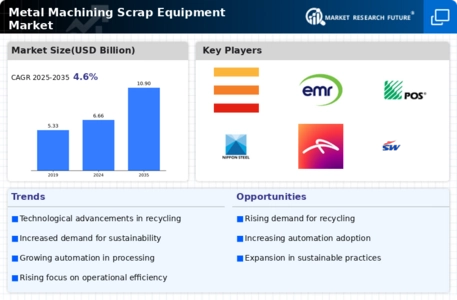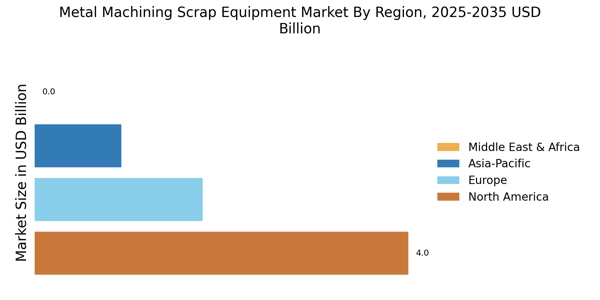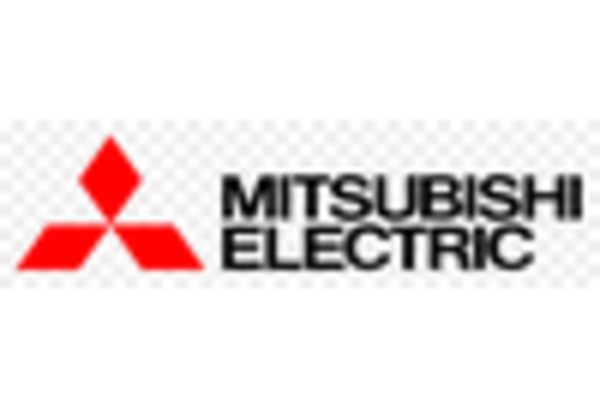Growth of the Circular Economy
The concept of a circular economy is gaining traction, emphasizing the importance of reusing and recycling materials to minimize waste. This paradigm shift is particularly relevant to the Metal Machining Scrap Equipment Market, where the focus is on transforming scrap metal into valuable resources. As businesses recognize the economic benefits of adopting circular practices, the demand for effective scrap processing equipment is expected to rise. Recent analyses indicate that the circular economy could contribute significantly to economic growth, with estimates suggesting a potential increase in GDP by up to 2% in certain regions. This trend underscores the importance of investing in metal machining scrap equipment, as companies strive to align with circular economy principles.
Increasing Industrial Production
The resurgence of industrial production across various sectors is a key driver for the Metal Machining Scrap Equipment Market. As manufacturing activities ramp up, the generation of metal scrap is expected to rise correspondingly. Industries such as automotive, aerospace, and construction are witnessing robust growth, leading to an increase in the demand for efficient scrap processing solutions. Recent statistics suggest that the manufacturing sector has experienced a growth rate of approximately 4% annually, further fueling the need for advanced metal machining scrap equipment. This trend indicates a promising outlook for the market, as companies seek to optimize their operations and manage scrap more effectively.
Rising Demand for Recycled Materials
The increasing emphasis on sustainability has led to a heightened demand for recycled materials across various industries. This trend is particularly evident in the Metal Machining Scrap Equipment Market, where manufacturers are seeking efficient ways to process scrap metal. According to recent data, the recycling rate for metals has reached approximately 90% in some regions, indicating a robust market for scrap processing equipment. As industries strive to reduce their carbon footprint, the need for advanced metal machining scrap equipment is likely to grow, facilitating the transformation of scrap into reusable materials. This shift not only supports environmental goals but also enhances the economic viability of metal recycling operations, thereby driving growth in the Metal Machining Scrap Equipment Market.
Technological Innovations in Equipment
Technological advancements play a pivotal role in shaping the Metal Machining Scrap Equipment Market. Innovations such as automated sorting systems, advanced shredders, and precision machining tools are enhancing the efficiency and effectiveness of scrap processing. For instance, the integration of artificial intelligence and machine learning in equipment design is enabling more accurate sorting and processing of scrap materials. This not only reduces operational costs but also increases the yield of recoverable metals. As manufacturers continue to invest in cutting-edge technologies, the Metal Machining Scrap Equipment Market is poised for significant growth, with projections indicating a compound annual growth rate of over 5% in the coming years.
Regulatory Pressures for Waste Management
Regulatory frameworks aimed at enhancing waste management practices are exerting pressure on industries to adopt more sustainable practices. The Metal Machining Scrap Equipment Market is directly influenced by these regulations, which often mandate the recycling and proper disposal of metal waste. Compliance with such regulations not only helps companies avoid penalties but also promotes a circular economy. As governments worldwide implement stricter waste management policies, the demand for efficient metal machining scrap equipment is likely to increase. This regulatory landscape encourages investment in advanced technologies that facilitate compliance, thereby driving growth in the Metal Machining Scrap Equipment Market.


















Leave a Comment